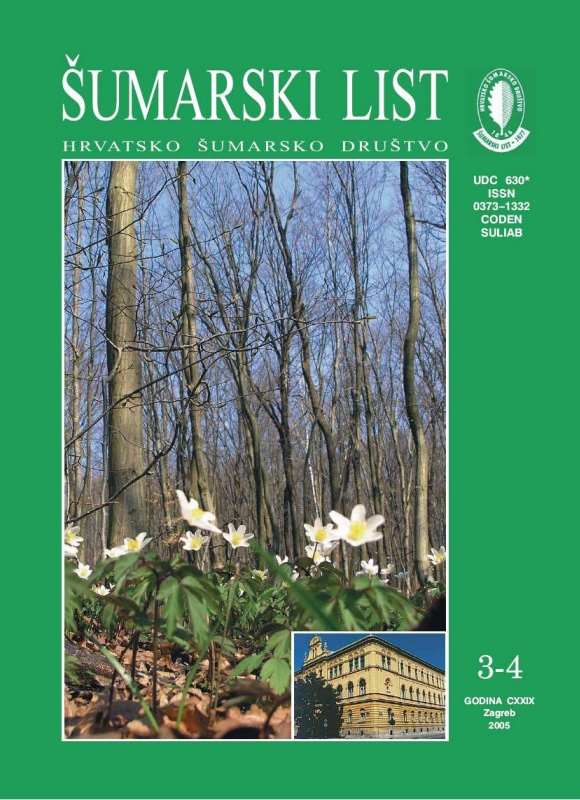
broj: 3-4/2005
pdf (26,0 MB) |
|
||||||||||||||
| IZVORNI ZNANSTVENI ČLANCI | ||
| Trinajstić, I., Z. Cerovečki | UDK 630* 188 (001) | |
| Contribution to the Syntaxonomic Analysis of the Ass. Erico-Fagetum (Ht. 1962) Trinajstić 1972 pdf HR EN | 135 | |
| PRETHODNO PRIOPĆENJE | ||
| Vrbek, B. | UDK 630* 114.2 + 425 | |
| Salinisation Influence on Vegetation and Forest Soils of Island Korčula pdf HR EN | 143 | |
| PREGLEDNI ČLANCI | ||
| Štilinović, L. | UDK 630* 628.19 + 614.7 | |
| Contamination of the Sava and Drava Rivers – Causes and Health Consequences pdf HR EN | 151 | |
| Summary: The term “Environmental health” as used by World Health Organisation includes both direct pathological effects of chemicals, radiation and some biological agents and indirect effects on health and well-being of broad physical, psychological, social and aesthetic environment, which includes water supply and sanitation. Health is not only absence of diseases – presence of well-being and quality of life are equally important. The linkage between drinking water should be dealt with analysing health and drinking quality statistics. The most direct environmental health related problems in Danube river basin are the following: a) diseases caused by bacteria and viruses in drinking water which occur more frequently in most Danubian states than in other West European countries, b) methaemoglobinemia which occur primarily in rural areas in many Danubian states, c) coverage with public water supply which is low in rural areas of many Danubian states; reliance on shallow ground water represents a serious health risk in these areas. In Croatia the Sava river area encompasses 25100 km2, whereas Drava river, including immediate Danube catchment area, encompasses 9660 km2. The discharge from public sewer system in Drava river amounts 53.6 x millions m3 per annum and that in Sava river 146.4 x millions m3 per annum. In the Strategic Action Plan for the Danube River Basin Croatia have declared 22 “hot spots”, mostly due to municipal and technological waste and waste from petrochemical and fertiliser plants. Different aspects of pollution drinking water, ground water, soil and sediments in the Sava and Drava rivers have been investigated by numerous croatian scientists. According to their results organic matter creat major pollution problem, but heavy metals, pesticides and organochlorine pollutants should not be underestimated. Potential to contaminate drinking water resource, threatening to results in long term adverse effects on human health, has increased dramatically as a consequence of the war. Key words: health; water pollution | ||
| STRUČNI ČLANCI | ||
| Zelić, J., M. Stojić | ||
| The Depedence of Stockwood Density an Natural Drying Period for European Ash and Common Oak pdf HR EN | 157 | |
| Puljak, S. | UDK 630* 831 | |
| Investigating the Combustible Propety of Noncommercial Tree Species for Generating Heat and Electrical Energy pdf HR EN | 169 | |
| Tolić, I. | UDK 630* 156 | |
| Barbary Sheep (Ammotragus lervia) Morphological, Biological and Ecological Properties pdf HR EN | 177 | |


